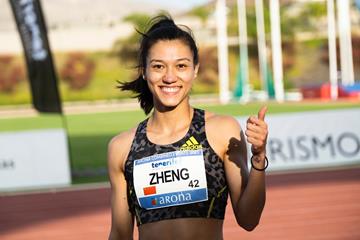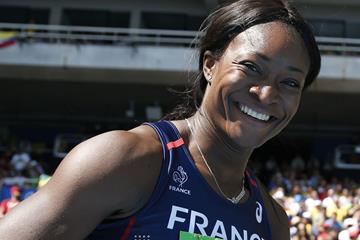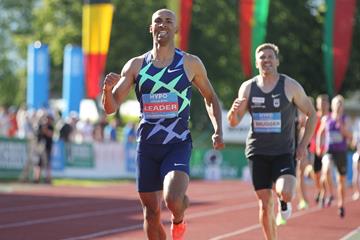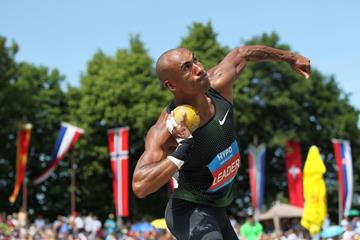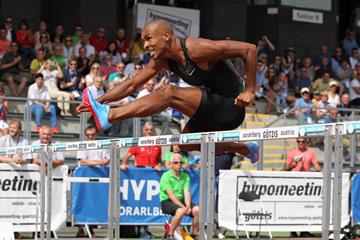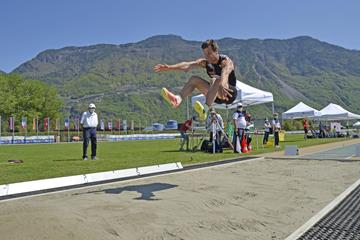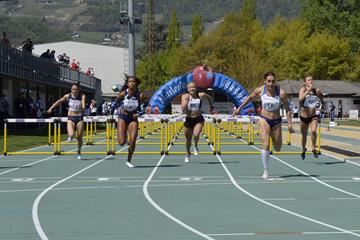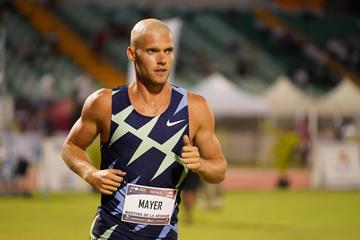 Countdown
Countdown
 Countdown
Countdown
The decathlon is a combined ten-discipline track and field event held over two days. Athletes earn points for their performance in each event and the winner is the competitor that accumulates the most points across all disciplines.
Decathlon competitors have to master a range of skills and techniques. Because of this, the decathlon is regarded as an all-around athletics test.
The decathlon evolved from the pentathlon, a regular feature in the Ancient Olympics that included the long jump, discus, javelin , sprint and wrestling
Versions of the event re-emerged during the 19th century
The first combined event was contested at the 1904 Olympics
The current format was first contested in 1911 and the decathlon made its Olympic debut in 1912 - this was won by the legendary Jim Thorpe
The comparative event for women is the heptathlon
The 10 events of the decathlon are: 100 metres, long jump, shot put, high jump, 400 metres, 110 metres hurdles, discus , pole vault, javelin and 1500 metres
The International Association of Athletics Federations (IAAF) recognised the first decathlon record in 1922. This debut record was set by Aleksander Klumberg (Estonia). Using today’s point-scoring system, Klumberg achieved a score of 6087.
However, one of the most famous performances occurred 10 years prior at the 1912 Olympics. It was here that Jim Thorpe (United States) became a gold medallist. He placed in the top four in every event and by 688 points.
During the following decades, the United States dominated the decathlon. They pushed the event to new heights, achieving 13 world records between 1924 and 1976. However, there was one athlete who was lightyears ahead of his time: Yang Chuan-kwang (CK Yang).
As the first Olympic medallist from Taiwan, Chuan-kwang set an astounding world record in 1963 with 9121, becoming the first athlete to surpass 9000 points. His score equates to 8010 points on the current scoring tables.
The decathlon scoring tables were revised during the 1960s and Chuan-kwang's performance was worth 8010 on the updated system. USA's Russ Hodge set the first world record with the new points system, scoring 8230 in 1966.
In 1980, Britain's Daley Thompson set his first of four decathlon world records with 8622. He improved the mark to 8798 in 1984.
USA's Dan O'Brien broke it in 1992 with 8891, while Roman Sebrle of the Czech Republic became the first man to surpass 9000 points with the current scoring tables, scoring 9026 in 2001.
USA's Ashton Eaton bettered that with 9039 in 2012, then improved to 9045 to win the 2015 world title in Beijing. Eaton's mark lasted three years as France's Kevin Mayer scored 9126 in Talence in 2018.
A decathlete is often regarded as an incredibly well-rounded and diverse athlete. As such, the most versatile competitors have left an indelible mark on the sport.
Historically, the US has been the most successful nation at the Olympics. In total, US decathletes secured 14 gold medals between 1912 and 2016. Among them is the incomparable Bob Mathias, who won consecutive Olympic golds in 1948 and 1952.
To date, only two other decathletes have won two Olympic titles: Daley Thompson (Great Britain) and Ashton Eaton (United States). Thompson secured back-to-back wins in 1980 and 1984, while Eaton replicated his feat in 2012 and 2016.
In recent years, Canadian athletes have pushed the boundaries of the sport. The first is Damian Warner, whose Olympic record secured the gold medal in 2021. The second is Pierce LePage, who claimed his first World Championship title in 2023.
The events in the decathlon are contested across two days, with five events on the first day and five events on the second. Here are the decathlon events in order:
Day 1: 100 metres, long jump, shot put, high jump and 400 metres
Day 2: 110 metres hurdles, discus throw, pole vault, javelin throw and 1500 metres
100m: The decathlon begins with a 100 metres sprint. Competitors start in the blocks and the winner is the athlete who completes the distance in the fastest time.
Long jump: In the long jump, athletes sprint down a runway, leap from the take-off board and land in the sandpit. The winner is the athlete that leaps the farthest.
Shot put: The shot put sees competitors put a heavy metal ball (the shot) as far as they can. The men’s shot weighs 7.26kg (16lb).
High jump: The high jump involves clearing a horizontal bar at increasing heights. Athletes must clear the highest height possible without knocking the bar down.
400m: The first day of the decathlon ends with a 400 metres sprint. This distance covers one full lap of the track.
110m hurdles: The second day commences with the 110 metres hurdles. This involves sprinting over 10 hurdles that are spaced at a distance of 9.14m (29.97 feet) from each other.
Discus throw: In the discus, competitors throw a 2kg discus as far as possible. The discus is thrown from a 2.5m throwing circle.
Pole vault: The pole vault involves ‘vaulting’ over a high horizontal bar. Athletes sprint and use the pole to clear the highest height possible.
Javelin throw: Competitors throw a javelin with the aim of achieving the longest distance. The men’s javelin measures 2.6-2.7m in length and it must land with the metal head first.
1500m: The last event in the decathlon is a middle-distance race. Athletes earn their final points in the 1500 metres.
The decathlon uses a points system to score each event, with points awarded based on the athlete’s performance in each discipline. The points an athlete earns in each event are combined, and this combined score determines the final standings. The athlete who ends the decathlon with the best overall score wins the event.
Decathlon scoring works by turning performances into points using a decathlon scoring table. To score 1000 points in each event, a decathlete would have to produce the following results:
100m: 10.39 seconds
Long jump: 7.76m
Shot put: 18.40m
High jump: 2.21m
400m: 46.17 seconds
110m hurdles: 13.80 seconds
Discus: 56.17m
Pole vault: 5.29m
Javelin: 77.19m
1500m: 3:53.79
To compete in the decathlon, athletes must master a multitude of skills and techniques, including:
The decathlon features three running events: the 100m, the 400m and the 1500m. The two shorter events require a quick start, smooth acceleration and perfect sprinting form. The right technique is key to maintaining momentum and securing a strong finish.
In the 110m hurdles, the best hurdling technique results in a fluid movement that allows athletes to clear each hurdle without losing speed. Additionally, excellent sprinting ability is crucial to securing a fast time.
The decathlon programme includes three jumping events: the long jump, the high jump and the pole vault. The approach, take-off and posture are crucial in all three disciplines.
The decathlon also incorporates three throwing disciplines: shot put, discus and javelin. Shot put techniques include the spin and glide, discus calls for specialised mechanics and throwing techniques, and a good distance in the javelin is largely dependent on the throwing angle.
In addition to the rules of each individual event, the decathlon itself has its own set of rules. Here are the main guidelines that athletes must follow:
Each competitor must start or make a trial in all disciplines in the designated order
Failure to attempt to start or make a trial in an event will result in elimination. Decathletes are allowed to commit one false start per race in the track events. A second false start, independently of who was responsible for the first false start, leads to disqualification
In the long jump, shot put, discus throw and javelin throw, all competitors are limited to three attempts
Athletes earn points based on their performances in individual events
The winner is the athlete who scores the most points overall
Should athletes end the competition with the same number of points, it is determined as a tie
While it is traditionally a men’s event, women can and do compete in the decathlon, although it doesn’t feature in major international championships. Women tend to compete in the heptathlon, a seven-discipline track and field event.
If an athlete fails to attempt to start or make a trial in any of the 10 disciplines, then that athlete will be considered to have abandoned the competition and will not be allowed to compete in any further event. They will not receive a final score or rank and will be recorded as DNF (did not finish) in the final results.
Yes, there are different age groups and categories in the decathlon. This includes U18, U20, senior and masters categories. These are organised into their own competitions, for example, the World Athletics U20 Championships and the World Masters Athletics Championships.
 GER
GER
 PUR
PUR
 USA
USA
 NOR
NOR
 EST
EST
 GER
GER
 USA
USA
 SUI
SUI
 USA
USA
 FRA
FRA
